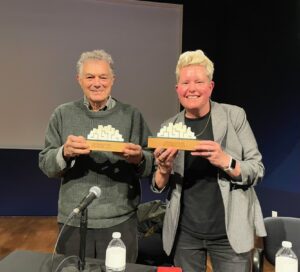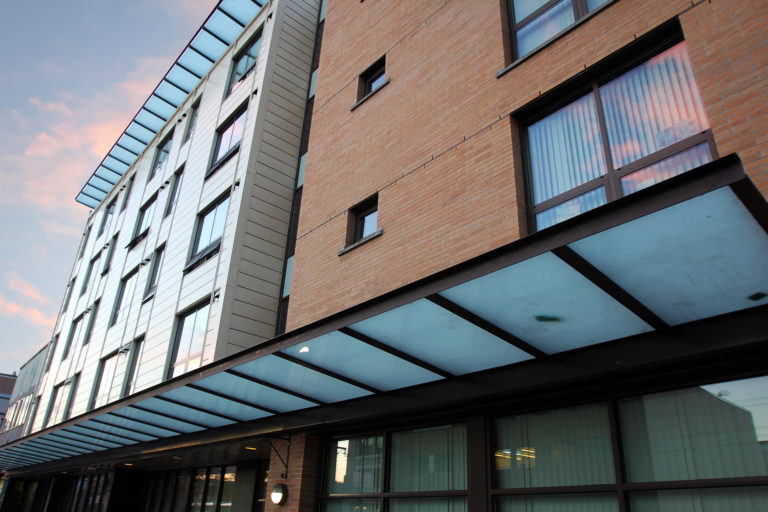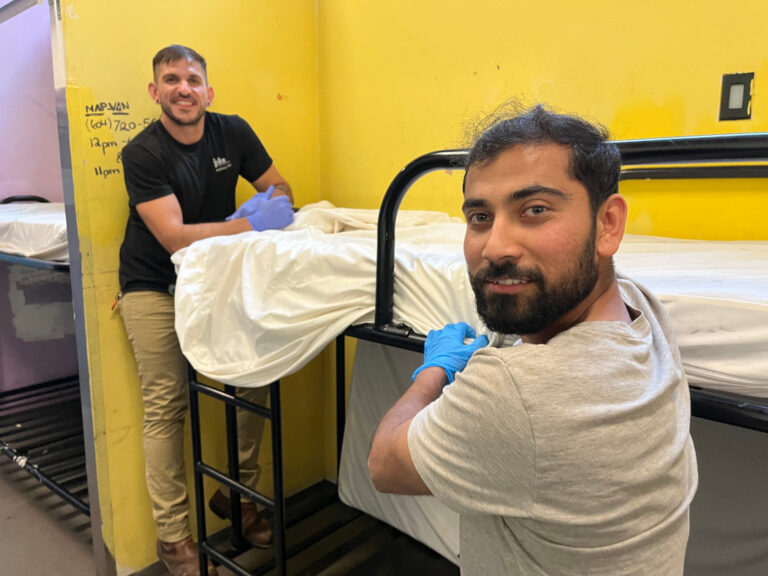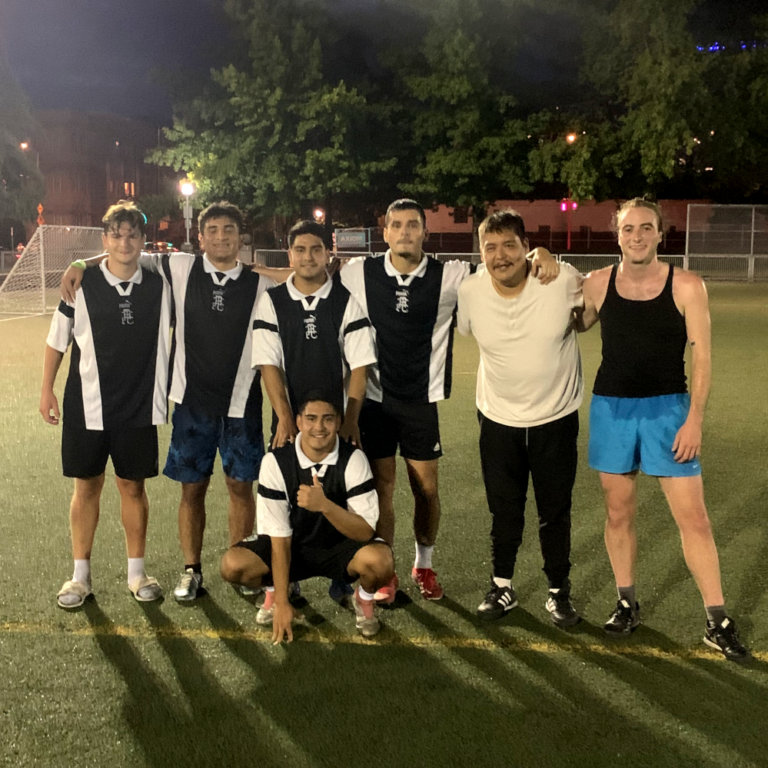It’s hard for people outside of the neighbourhood to come to know the Downtown Eastside. Endless streams of sensationalist headlines are more apt to distort than to bring understanding to this complex neighbourhood.
That’s why we were so excited to take part in a public debate on the neighbourhood, hosted by Urbanarium, a group designed to raise understanding of the planning and design of communities.
It was a wonderful opportunity to share our observations as a service provider in the area for very nearly three decades.
The debate centered around the City of Vancouver’s Downtown Eastside Plan [PDF], a 30-year project launched in 2014 to protect low-income residents by restricting commercial developments.
It asked a contentious question: would allowing more mixed-use developments help or harm the neighbourhood?
PHS Housing Director Tanya Fader was joined by former Senior City Planner Nathan Edelson to talk in favour of the DTES Plan.
Understanding
“The idea of a public debate isn’t to solve problems, it’s to open up a healthy dialogue so people go away with a better understanding,” said Tanya (pictured below with Nathan).
 “Essentially, the question was: should there be more social housing or should there be more intensive development of the Hastings strip and the DTES in general?
“Essentially, the question was: should there be more social housing or should there be more intensive development of the Hastings strip and the DTES in general?
“My point was that if there’s re-development, low-income people would get pushed out, and where would they go? And it’s not just about housing. If the area is gentrified, marginalized people wouldn’t be welcome in the restaurants or retail spaces.”
She reviewed how the DTES Plan was created through stakeholder consultation that included low-income community members, Indigenous groups, social service organizations and business improvement associations.
However, the plan hasn’t been given enough time or funding to show results.
“By the 1990s, the DTES was the last existing neighbourhood where a person could rent a welfare-rate room, having been pushed out of every other neighbourhood in Vancouver for development,” said Tanya.
“The migration of the poor in B.C. meant that, yes, the DTES did become the landing space for people struggling with poverty, addiction, mental health and other disabilities.
“We need more housing, not less – homes are the main correction needed to move us forward.”
The point of the exercise was to provide an engaging, informative discussion about civic issues: an opportunity for people to learn about the DTES, and the role of PHS and other service providers.
Residents’ support
And people turned up. The place was packed. And what an outcome!
Urbanarium had never seen so great a swing in all their years of hosting debates. Polled coming in, only 15 per cent of attendees thought the city should stick with the DTES Plan; after the discussion, 55 per cent were in favour.
“I’d like to express my gratitude to the PHS residents, particularly those from the Portland Hotel who attended to share their stories about the importance of community, and their encouraging smiles and waves from the front rows during the debate and the hugs and conversations following,” said Tanya.
A big shout-out to the skillful moderation of Frances Bula and all the people in the audience who took the time to bring their generosity, curiosity, hard questions and open minds to the event. We agree that more diversity of panelists would have further enriched the discussion. No question there. With that limitation fully acknowledged, we can still look to what was achieved. In an increasingly polarized world, with so much discussion shouted down by sloganeering and vilification, people came to hear complex issues discussed and were open to changing their minds.
- Learn more about innovative PHS programs and our supportive housing in Vancouver and Victoria, B.C.
- Donate to continue innovative projects like these.



